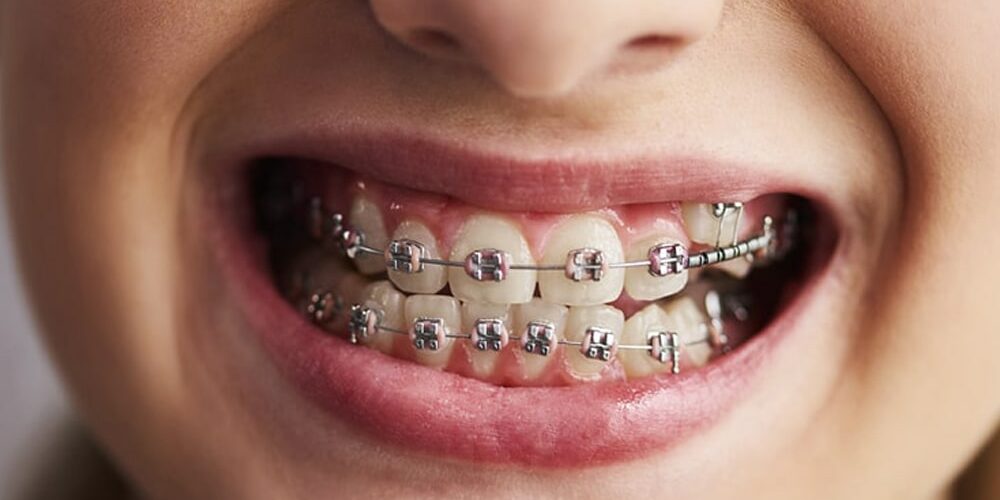
The Magic of Braces: How Teeth Move
Braces, those metal or ceramic contraptions affixed to our teeth, serve a vital purpose in orthodontics. They are designed to straighten teeth and bring them into their new positions. But have you ever wondered how braces actually move teeth?
The process is fascinating. Braces work by applying gentle pressure on the teeth, gradually shifting them into proper alignment. This pressure stimulates the bone surrounding the roots of the teeth, causing it to remodel and allow the teeth to move. Over time, as the braces continue to exert this force, your bite begins to change, guiding your teeth into their desired places.
So if you're looking for an understanding of how braces work their magic on your smile, look no further!
The Mechanics of Braces and Tooth Movement
Braces are not just a fashion statement, they actually work to straighten your teeth and give you that winning smile. But have you ever wondered how braces actually move your teeth? Let's dive into the mechanics of braces and tooth movement.
Brackets, Wires, and Bands Work Together to Exert Pressure on Teeth
The first key players in the tooth movement process are brackets, wires, and bands. Brackets are small attachments that are bonded to each tooth using dental adhesive. These brackets act as handles for the wires that will guide the movement of your teeth. The archwires are then threaded through each bracket, applying gentle pressure on your teeth to encourage them to move into their desired positions. In some cases, elastic bands may also be used to help correct bite issues by aligning the upper and lower jaws.
Archwires Guide the Movement of Teeth in Specific Directions
Archwires play a crucial role in guiding the movement of your teeth. These wires come in different shapes and sizes depending on your orthodontic needs. As you progress through your treatment, these archwires will be periodically adjusted by your orthodontist to apply controlled forces on specific teeth or groups of teeth. By adjusting the tension in these wires, orthodontists can direct tooth movement in precise directions.
Elastic Bands Help Correct Bite Issues by Aligning the Upper and Lower Jaws
If you have an overbite or underbite, elastic bands may be used as part of your orthodontic treatment plan. These tiny rubber bands connect upper and lower brackets together, exerting additional force on the jawbones to align them properly. This helps correct bite issues by bringing the upper and lower jaws into proper alignment.
Orthodontic Appliances May Be Used for More Complex Tooth Movements
In some cases where more complex tooth movements are required, additional orthodontic appliances may be used. These appliances, such as springs or screws, can provide additional force to move teeth that are particularly stubborn or require more significant adjustments. Your orthodontist will determine if these appliances are necessary based on your specific needs.
The mechanics of braces and tooth movement involve a combination of gentle pressure, precise adjustments, and the use of various orthodontic tools. By understanding how braces work, you can appreciate the science behind achieving that beautiful smile. So next time you're at the orthodontist's office getting your braces adjusted, remember that each little adjustment is helping to guide your teeth into their proper places.
Understanding the Process of Braces Straightening Teeth
Braces are a popular orthodontic treatment used to straighten teeth and improve smiles. But have you ever wondered how braces actually move teeth? Let's dive into the process and understand it better.
Braces Gradually Shift Teeth by Applying Consistent Pressure Over Time
When braces are placed on your teeth, they consist of brackets that are attached to each tooth using a special adhesive. These brackets act as anchors for the archwire, which is threaded through them. The archwire exerts gentle but continuous pressure on your teeth, gradually moving them into their desired positions.
The consistent pressure applied by braces stimulates a process called bone remodeling. This means that as pressure is exerted on the teeth, the bone surrounding them starts to break down in certain areas while rebuilding in others. This allows the teeth to shift and move towards their new positions over time.
Periodic Adjustments Ensure Continuous Progress Throughout Treatment
As you progress through your orthodontic treatment with braces, periodic adjustments are necessary to ensure that your teeth continue to move in the right direction. During these adjustment appointments, your orthodontist will tighten or replace the archwire and make any necessary modifications to keep your treatment on track.
These adjustments may cause some discomfort or soreness for a few days after each visit as your teeth adjust to the new pressures being applied. However, this discomfort is temporary and can be managed with over-the-counter pain relievers if needed.
Retainers Help Maintain Tooth Alignment After Braces Removal
Once your braces have done their job and achieved straighter teeth, it's important to maintain that alignment. This is where retainers come into play. After braces removal, most patients are required to wear retainers regularly for a period of time prescribed by their orthodontist.
Retainers help prevent your newly aligned teeth from shifting back into their original positions. They hold your teeth in their new places while the surrounding bone and tissues stabilize. It's crucial to follow your orthodontist's instructions regarding retainer wear to ensure long-term success and maintain the results of your braces treatment.
How Braces Determine the Movement of Teeth
To understand how braces move teeth, dentists and orthodontists go through a detailed treatment planning process. This involves analyzing X-rays, impressions, and digital models of the patient's teeth to create a customized plan for each individual. Let's take a closer look at how these professionals determine the movement of teeth when using braces.
Treatment Planning: Analyzing X-rays, Impressions, and Digital Models
Before beginning any orthodontic treatment with braces, dentists or orthodontists carefully examine various diagnostic tools such as X-rays, impressions, and digital models. These provide crucial information about the current position of the teeth and help in creating an effective treatment plan.
Expertise in Tooth Movement
Dentists or orthodontists use their expertise to determine how each tooth should be moved for optimal results. They consider factors such as overcrowding, gaps between teeth, and bite alignment issues. By assessing these factors, they can develop a comprehensive plan to guide the movement of the teeth during the course of treatment.
Influencing Factors: Overcrowding, Gaps, and Bite Alignment
Overcrowding is a common issue that often requires braces to straighten teeth. When there isn't enough space in the jaw for all the teeth to align properly, it can lead to misalignment or overlapping. Braces are designed to gradually shift the position of each tooth so that they fit harmoniously within the dental arch.
Gaps between teeth can also be addressed with braces. Orthodontic appliances apply gentle pressure on specific areas to close these gaps over time. By moving adjacent teeth closer together, braces can create a more uniform smile.
Another factor that influences treatment planning is bite alignment. If there are issues with how your upper and lower jaws meet when you bite down (malocclusion), braces can help correct this problem too. The goal is not only to achieve straight teeth but also to ensure a proper bite, which can improve overall oral health and function.
Computer Simulations: Visualizing the Movement of Teeth
In recent years, computer simulations have become valuable tools in orthodontics. These simulations allow dentists and orthodontists to visualize how braces will move teeth before starting the actual treatment. By using specialized software, they can create digital models that demonstrate the anticipated movement of each tooth throughout the course of treatment. This helps both the professionals and patients understand what to expect during their orthodontic journey.
The process of determining how braces move teeth is a combination of expert analysis, careful planning, and modern technology. Dentists and orthodontists consider various factors such as overcrowding, gaps between teeth, and bite alignment to create a personalized treatment plan for each patient. By utilizing advanced tools like computer simulations, they can provide a clearer picture of how braces will transform your smile.
Types of Orthodontic Braces for Teeth Alignment
Orthodontic treatment is a common way to straighten teeth and achieve a beautiful smile. There are several types of braces available, each with its own unique features and benefits. Let's explore some of the most popular options:
Traditional Metal Braces
Traditional metal braces have been used for decades and remain one of the most effective orthodontic treatments. They consist of small metal brackets that are bonded to each tooth using special dental glue. These brackets are then connected by archwires, which apply gentle pressure to gradually move the teeth into their desired positions.
Pros:
- Highly effective in treating complex dental issues
- Durable and can withstand significant forces
- Generally more affordable compared to other options
Cons:
- Visible appearance due to the metal brackets and wires
- May cause discomfort or irritation in the mouth initially
- Requires regular adjustments by an orthodontist
Ceramic Braces
For those seeking a more discreet option, ceramic braces provide an excellent alternative. These braces blend with the natural color of your teeth, making them less noticeable during treatment. The brackets used in ceramic braces can be either clear or tooth-colored.
Pros:
- Less noticeable than traditional metal braces
- Effective in treating various dental misalignments
- Stain-resistant and do not discolor easily
Cons:
- More expensive than metal braces
- Ceramic brackets may be more prone to breakage compared to metal ones
- Require regular maintenance to prevent staining from food or drink consumption
Lingual Braces
Lingual braces offer a virtually invisible treatment option as they are attached behind the teeth, hiding them from view when you smile. This makes them particularly appealing for individuals who wish to maintain a natural-looking appearance throughout their orthodontic journey.
Pros:
- Invisible from the front view, providing aesthetic appeal
- Can treat even complex dental issues effectively
- Custom-made for a precise fit
Cons:
- More challenging to clean compared to other types of braces
- May cause initial discomfort or speech changes
- Require regular adjustments and maintenance by an orthodontist
Invisalign Aligners
Invisalign is a popular choice among individuals who prefer removable and nearly invisible aligners. These clear plastic trays are custom-made to fit snugly over your teeth, gradually shifting them into alignment. Invisalign offers the flexibility to remove the aligners while eating, brushing, or flossing.
Pros:
- Virtually invisible, providing a discreet treatment option
- Removable for easy maintenance and oral hygiene
- Smooth and comfortable with no wires or brackets
Cons:
- Requires strict compliance in wearing the aligners for optimal results
- Not suitable for treating severe dental misalignments
- Can be more expensive compared to traditional braces
It's essential to consult with an experienced orthodontist who can recommend the best option based on your specific needs. They will evaluate your dental condition and provide guidance on which type of braces will help you achieve your desired results.
Phases of Braces Treatment: Alignment, Leveling, and Finishing
In the journey to achieving a straighter smile, braces play a crucial role. But have you ever wondered how braces actually move teeth? Let's dive into the three main phases of braces treatment: alignment, leveling, and finishing.
The Alignment Phase: Positioning Teeth Correctly
During the alignment phase of braces treatment, the primary focus is on positioning teeth correctly in relation to each other. This phase sets the foundation for a properly aligned smile. Your orthodontist will carefully assess your teeth and create a treatment plan tailored to your specific needs.
Here's what happens during the alignment phase:
- Initial assessment: Your orthodontist will evaluate your teeth using X-rays, photographs, and impressions. This helps them understand your unique dental structure and identify any underlying issues.
- Placement of brackets: Small brackets are bonded to each tooth using dental adhesive. These brackets act as anchors for the wires that will gradually move your teeth into their desired positions.
- Wire adjustments: Over time, your orthodontist will make regular adjustments to the wires connecting the brackets. These adjustments apply gentle pressure on specific teeth or groups of teeth to guide them into proper alignment.
- Progress checks: You'll have periodic appointments with your orthodontist to monitor the progress of your treatment. They may also make additional wire adjustments based on how your teeth are responding.
The alignment phase sets the stage for subsequent phases by ensuring that each tooth is in its correct position relative to neighboring teeth.
The Leveling Phase: Creating a Smooth Arch Shape
Once your teeth are aligned properly, it's time for the leveling phase of braces treatment. This phase focuses on adjusting the height of certain teeth to create a smooth arch shape along both upper and lower jaws.
Here's what happens during this phase:
- Selective filing: In some cases, your orthodontist may need to perform selective filing or reshaping of certain teeth. This helps create a more even and harmonious arch shape.
- Additional appliances: Depending on your specific needs, additional appliances such as rubber bands or springs may be used alongside braces to aid in leveling the teeth.
- Continued wire adjustments: Your orthodontist will continue to make wire adjustments during this phase to fine-tune the position of each tooth and ensure a balanced arch shape.
The leveling phase aims to achieve an aesthetically pleasing smile with a smooth curve along the dental arch.
The Finishing Phase: Refining Tooth Positions and Bite Alignment
The final phase of braces treatment is the finishing phase. At this stage, the focus is on refining tooth positions and ensuring proper bite alignment. It's all about those last-minute touches that bring your smile to perfection!
Here's what happens during the finishing phase:
- Detailing wire adjustments: Your orthodontist will make detailed wire adjustments to perfect the positioning of each tooth. This involves small tweaks and refinements to ensure optimal alignment.
- Fine-tuning bite alignment: If you have any bite issues, such as an overbite or underbite, your orthodontist will address them during this phase. They may use elastics or other appliances to correct your bite alignment.
- Retainers: Once your braces are removed, you'll be provided with retainers to help maintain the results achieved during treatment. Retainers are typically worn for a specified period, gradually transitioning into nighttime use only.
By completing the finishing touches, your orthodontic journey comes to an end, leaving you with a beautifully aligned smile and improved oral health.
Archwires and Elastics in Braces Treatment
In braces treatment, archwires play a crucial role in guiding the movement of teeth. These wires are the main components responsible for shifting your teeth into their desired positions. Let's delve deeper into how archwires and elastics work together to move your teeth effectively.
Archwires: The Force Behind Tooth Movement
Archwires are like the superheroes of braces treatment. They are thin, flexible wires made from materials like stainless steel or nickel titanium. These wires are inserted into brackets that are attached to your teeth. As you progress through your orthodontic journey, these archwires will be periodically adjusted by your orthodontist to gradually move your teeth.
Thicker archwires exert more force on your teeth, allowing for more significant movements. On the other hand, thinner archwires provide finer control and allow for precise adjustments to achieve optimal tooth alignment. Your orthodontist carefully selects and changes the archwire size during different stages of treatment to ensure consistent progress.
Elastics: Adding Extra Pressure for Specific Movements
Elastics, also known as rubber bands, are another essential component of braces treatment. These small elastic bands connect specific brackets on your upper and lower jaws, applying additional pressure to guide specific tooth movements. By strategically placing these elastics in various configurations, orthodontists can correct issues such as overbites, underbites, or midline discrepancies.
The configuration of elastics depends on the specific correction needed for each patient's unique dental situation. For example:
- Overbite Correction: If you have an overbite (when your upper front teeth overlap significantly with your lower front teeth), interarch elastics may be used to pull the upper jaw back and align it with the lower jaw.
- Underbite Correction: In cases where there is an underbite (when lower front teeth protrude past the upper front teeth), elastics can be used to pull the lower jaw back and align it with the upper jaw.
- Midline Correction: When the center lines of your upper and lower jaws do not align properly, rubber bands can help shift the teeth and achieve a balanced midline.
The Dynamic Duo: Archwires and Elastics
Archwires and elastics work together as a dynamic duo in braces treatment. While archwires provide the primary force to move your teeth, elastics add an extra boost for specific movements. This combination allows orthodontists to address various dental issues effectively.
It's important to note that every patient's treatment plan is unique, and the use of archwires and elastics will vary based on individual needs. Your orthodontist will determine the appropriate size of archwire and configuration of elastics required for your specific case.
By understanding how archwires and elastics work in tandem, you can appreciate the intricate process behind braces treatment. So next time you look at your braces, remember that these wires and rubber bands are working hard to give you that beautiful smile!
The Science Behind How Braces Move Teeth
Congratulations! You now have a solid understanding of the mechanics behind how braces move teeth. By applying gentle pressure to your teeth, braces gradually shift them into their desired positions. This process involves various components like archwires and elastics, which work together to guide your teeth into alignment.
Now that you know the science behind it, it's time to take action. If you're considering getting braces or if you already have them, remember that patience is key. Your orthodontist will carefully plan each step of your treatment to ensure optimal results. So, trust the process and keep up with regular appointments to monitor your progress.
Bruno Orthodontics offers Invisalign, braces, and other orthodontic treatment for adults, teens, and children in an award-winning office in Chevy Chase. Dr. Jill Bruno is a Diamond+ Provider for Invisalign, putting her in the top 1% of Invisalign doctors. Convenient online scheduling and virtual consults are available for new and current patients.



